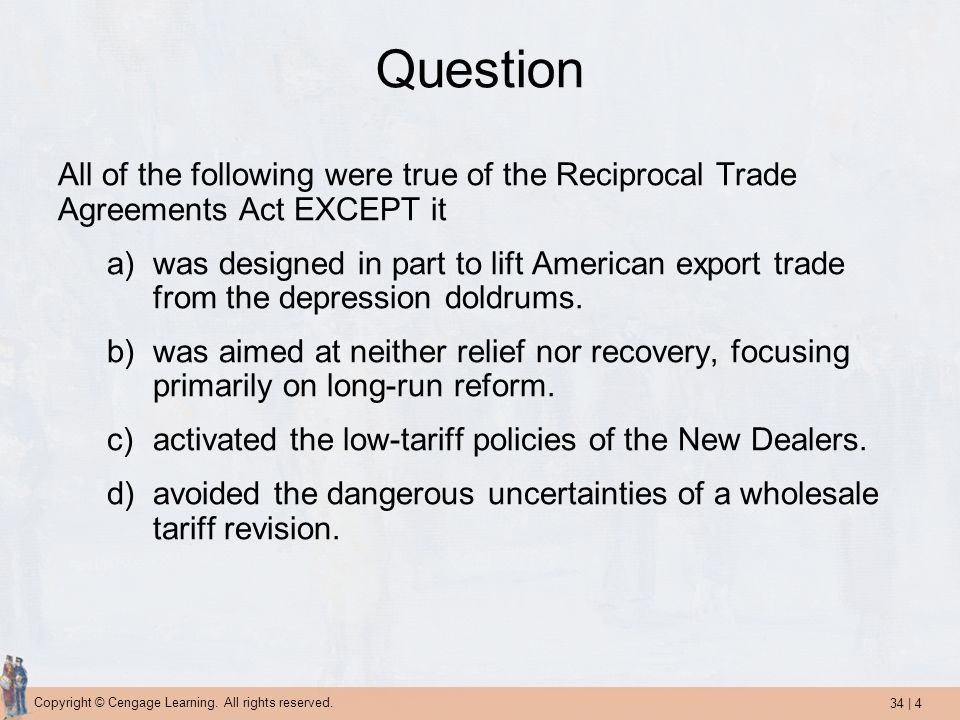All Of The Following Are True About Executive Agreements Except

The power of the executive branch, particularly concerning foreign policy, is a subject of ongoing debate. One instrument often employed, and frequently scrutinized, is the executive agreement. Understanding its nuances, limitations, and constitutionality is crucial for informed civic engagement.
At the heart of this discussion lies a fundamental question: What are the precise boundaries of presidential authority in bypassing formal treaty ratification? This article delves into the complexities surrounding executive agreements, examining their use, legal standing, and potential ramifications, specifically addressing common misconceptions about their nature. By clarifying these points, we aim to foster a more nuanced understanding of this potent tool wielded by the executive branch.
Understanding Executive Agreements
Executive agreements are international agreements made by the president of the United States without requiring Senate ratification. They are distinct from treaties, which necessitate a two-thirds vote in the Senate. This difference is the core of much of the debate surrounding their use.
These agreements can cover a wide range of topics, from trade and defense to environmental cooperation. Their legal basis stems from the president's constitutional powers, including the power as Commander-in-Chief and the authority to conduct foreign affairs.
The Scope of Presidential Power
The Supreme Court has generally upheld the validity of executive agreements, especially when they are based on existing legislation or treaties. United States v. Belmont (1937) and United States v. Pink (1942) are landmark cases affirming this principle. These cases emphasized the president's role as the sole organ of the federal government in the field of international relations.
However, the Court has also recognized limitations. Executive agreements cannot contradict existing federal law or the Constitution. This principle ensures a balance of power and prevents the executive branch from overstepping its constitutional boundaries.
Common Misconceptions Debunked
One common misconception is that executive agreements are inherently weaker than treaties. While treaties have the weight of Senate approval, executive agreements can be just as binding under international law.
Another misconception is that executive agreements are only used for minor or insignificant matters. In reality, they have been used to address significant international issues, such as the Iran nuclear deal (Joint Comprehensive Plan of Action - JCPOA), though its status remains highly debated, and various trade agreements.
A critical point of clarification: unlike treaties, most executive agreements do not supersede prior inconsistent federal law. Treaties, under the Supremacy Clause of the Constitution, can sometimes override existing statutes, a power generally not afforded to executive agreements. This is a key distinction.
The Nuances and Limitations
Congress plays a role in overseeing executive agreements. The Case Act of 1972 requires the President to inform Congress of any international agreement, including executive agreements, within 60 days of its entry into force. This provision allows Congress to monitor the executive's actions and potentially influence foreign policy.
One significant limitation is that executive agreements are typically binding only on the current administration. A subsequent president can withdraw from an executive agreement, as seen with the US withdrawal from the JCPOA and the Paris Agreement on climate change. This lack of permanence is a key difference from treaties, which generally require a more formal process for withdrawal.
Furthermore, executive agreements cannot create new domestic law without Congressional approval. They can implement existing laws or policies, but they cannot independently establish new legal obligations for US citizens. This protects the legislative authority of Congress.
Examples and Impact
Throughout history, numerous significant agreements have been concluded via executive agreement. The Louisiana Purchase, although initially debated, was ultimately implemented through a series of agreements that bypassed formal treaty ratification.
The North American Free Trade Agreement (NAFTA), while ultimately replaced by the USMCA, was initially implemented through a series of congressional-executive agreements, demonstrating the significant economic impact these agreements can have. These agreements spurred immense growth and prosperity across North America.
The use of executive agreements continues to evolve. As global challenges become more complex and require swift action, presidents may increasingly rely on these agreements to address pressing international issues. However, such reliance will invariably fuel ongoing debates about the balance of power between the executive and legislative branches.
Conclusion: The Ongoing Debate
Executive agreements are a vital tool in the arsenal of the US President for conducting foreign policy. Their use reflects the need for flexibility and efficiency in international relations.
Understanding the legal basis, limitations, and practical applications of executive agreements is essential for evaluating their impact on American foreign policy and the balance of power within the government. As administrations come and go, the debate surrounding the appropriate use of executive agreements will undoubtedly continue, requiring constant vigilance and informed discourse to ensure accountability and uphold the principles of checks and balances. It is up to citizens to ensure that the power granted to the executive branch is not abused.
The tension between efficiency and democratic accountability will likely shape the future of executive agreements. Striking a balance between these competing values is crucial for maintaining a strong and effective foreign policy while safeguarding constitutional principles.








![All Of The Following Are True About Executive Agreements Except [ 5.4 ] The President's Foreign Affairs Powers - ppt download](https://slideplayer.com/slide/12815871/78/images/7/Executive+Agreements+An+executive+agreement+is+a+pact+between+the+President+and+the+head+of+a+foreign+state%2C+or+a+subordinate..jpg)




.jpg)




